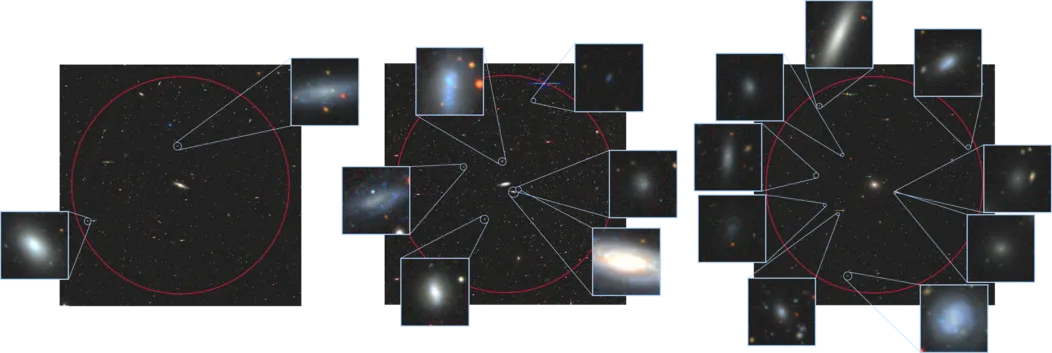If you thought that the Milky Way was just your average run-of-the-mill galaxy, you’d be wrong. Turns out that it’s quite the freak and we shouldn’t consider it a standard example of how spiral galaxies evolve. Multiple results suggest that something unusual is afoot when it comes to the Milky Way’s satellites, the smaller galaxies that orbit our own.
The Satellites Around Galactic Analogs (SAGA) Survey has looked at 101 spiral galaxies similar to the Milky Way and 378 satellite galaxies around those 101. Finding these smaller galaxies is difficult as they are very faint, but the potential reward was high. It provided insights into the dark matter halo of these galaxies, the spherical distribution of dark matter believed to be the birthplace of all of these objects.
“There’s a reason no one ever tried this before,” Professor Risa Wechsler, from Stanford University, said in a statement. “It’s a really ambitious project. We had to use clever techniques to sort those 378 orbiting galaxies from thousands of objects in the background. It’s a real needle-in-the-haystack problem.”
The Milky Way has four observable satellites consistent with the limit of the survey. Two of these satellites are actually visible to the naked eye in the southern hemisphere: the Large and Small Magellanic Clouds (LMC and SMC), although they might be three for the price of two.
One aspect of the research showed that the 101 spiral galaxies in the survey have between 13 and zero satellites, so the Milky Way is in the correct range, but when galaxies with large satellites like the LMC and the SMC are considered, our own galaxy is actually found lacking.

Three examples of SAGA galaxies and their satellites.
Image credit: Yasmeen Asali (Yale), with images from the DESI Legacy Surveys Sky Viewer.
If this was not enough, a second study found that, typically, star formation is occurring in all satellite galaxies in the SAGA survey. But this is not the case for the Milky Way; only the LMC and the SMC are forming stars and this might be due to the interaction these two/three galaxies have with each other.
“Now we have a puzzle,” Wechsler said. “What in the Milky Way caused these small, lower-mass satellites to have their star formation quenched? Perhaps, unlike a typical host galaxy, the Milky Way has a unique combination of older satellites that have ceased star formation and newer, active ones—the LMC and SMC—that only recently fell into the Milky Way’s dark matter halo.”
Satellite galaxies closer to the large ones also tend to have less star formation. The work shows that there is a lot more to know about dark matter halos and how they shape the evolution of galaxies.
“Our results show that we cannot constrain models of galaxy formation just to the Milky Way,” said Wechsler, who is also a professor of particle physics and astrophysics at the SLAC National Accelerator Laboratory. “We have to look at that full distribution of similar galaxies across the universe.”
The studies are published in The Astrophysical Journal and can be found here and here.
Source Link: The Milky Way Is An Absolute Weirdo Among Its Peers